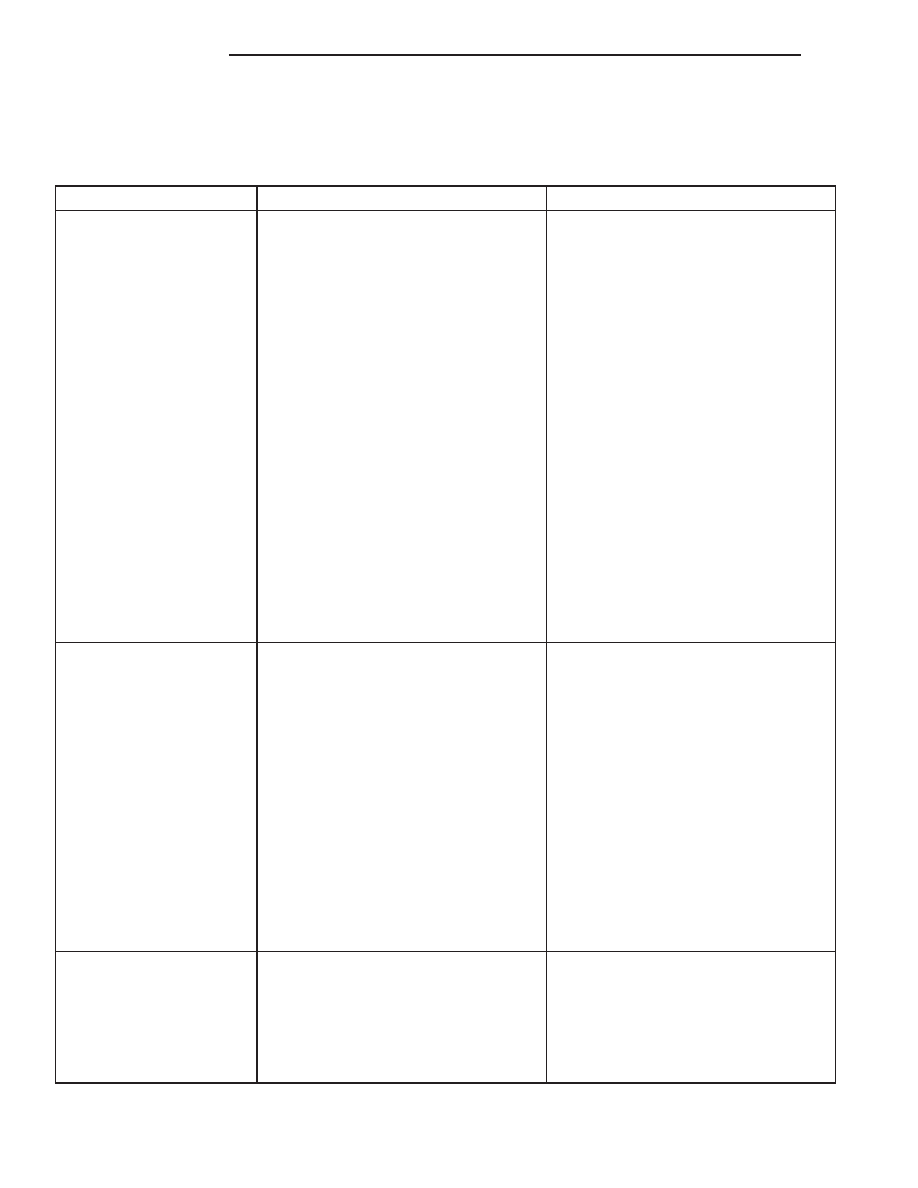Dodge Dakota (R1). Manual - part 470

DIAGNOSIS AND TESTING— ENGINE DIAGNOSIS - MECHANICAL
ENGINE MECHANICAL DIAGNOSIS CHART
CONDITION
POSSIBLE CAUSES
CORRECTION
NOISY VALVES/LIFTERS
1. High or low oil level in crankcase
1. Check for correct oil level. Adjust oil
level by draining or adding as needed
2. Thin or diluted oil
2. Change oil. (Refer to 9 - ENGINE/
LUBRICATION/OIL - STANDARD
PROCEDURE)
3. Low oil pressure
3. Check engine oil level. If ok, Perform
oil pressure test. (Refer to 9 - ENGINE/
LUBRICATION - DIAGNOSIS AND
TESTING) for engine oil pressure
test/specifications
4. Dirt in tappets/lash adjusters
4. Clean/replace hydraulic tappets/lash
adjusters
5. Bent push rod(s)
5. Install new push rods
6. Worn rocker arms
6. Inspect oil supply to rocker arms and
replace worn arms as needed
7. Worn tappets/lash adjusters
7. Install new hydraulic tappets/lash
adjusters
8. Worn valve guides
8. Inspect all valve guides and replace
as necessary
9. Excessive runout of valve seats or
valve faces
9. Grind valves and seats
CONNECTING ROD
NOISE
1. Insufficient oil supply
1. Check engine oil level.
2. Low oil pressure
2. Check engine oil level. If ok, Perform
oil pressure test. (Refer to 9 - ENGINE/
LUBRICATION - DIAGNOSIS AND
TESTING) engine oil pressure
test/specifications
3. Thin or diluted oil
3. Change oil to correct viscosity. (Refer
to 9 - ENGINE/LUBRICATION/OIL -
STANDARD PROCEDURE) for correct
procedure/engine oil specifications
4. Excessive connecting rod bearing
clearance
Measure bearings for correct clearance
with plasti-gage. Repair as necessary
5. Connecting rod journal out of round
5. Replace crankshaft or grind journals
6. Misaligned connecting rods
6. Replace bent connecting rods
MAIN BEARING NOISE
1. Insufficient oil supply
1. Check engine oil level.
2. Low oil pressure
2. Check engine oil level. If ok, Perform
oil pressure test. (Refer to 9 - ENGINE/
LUBRICATION - DIAGNOSIS AND
TESTING)
3. Thin or diluted oil
3. Change oil to correct viscosity.
9 - 68
ENGINE 3.9L
AN
ENGINE 3.9L (Continued)